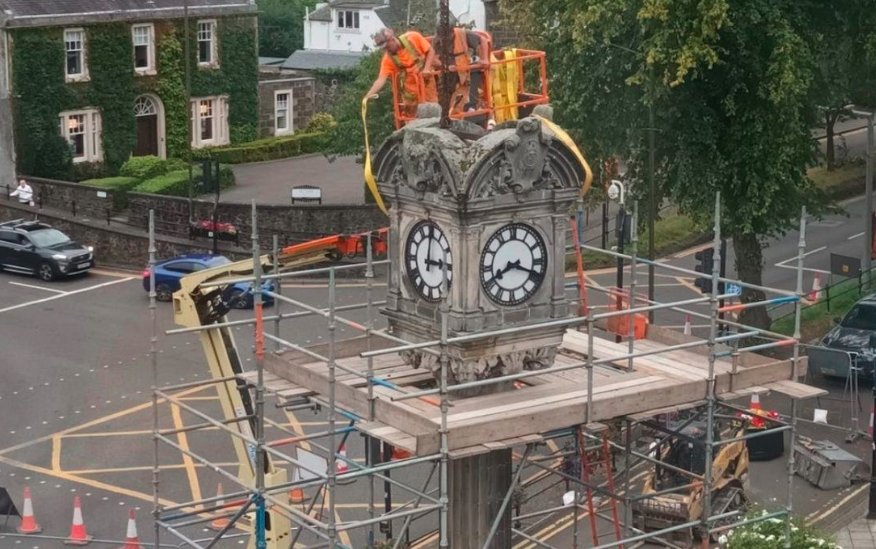A historic clock tower in Stirling, Scotland, was unexpectedly torn down by the council last month, sparking outrage and criticism from locals and heritage groups.
What happened to the Christie Clock?
- The Christie Clock was a category C-Listed building that was erected in 1906 in memory of George Christie, who was Provost of Stirling from 1870 to 1879.
- The clock tower was located on the corner of King Street and Spittal Street, near the city centre.
- On August 29, 2023, Stirling Council began work to remove the head of the clock for urgent off-site repairs, after it was deemed at risk of “immediate collapse” by specialists.
- However, the structure’s lack of stability resulted in both the clock head and tower being demolished, leaving only a pile of rubble behind.
Why did the council demolish the clock?
- The council claimed that the demolition was necessary to ensure public safety, as the clock tower had serious structural issues that could not be fixed on site.
- The council said that it had commissioned a specialist report on the condition of the clock in July 2023, which revealed that the clock head was “severely corroded” and “in danger of falling”.
- The council also said that it had notified Historic Environment Scotland (HES) and Stirling City Heritage Trust (SCHT) of its intention to remove the clock head for repairs, and that it had obtained a building warrant for the work.
- The council said that it had planned to carefully dismantle the clock head and transport it to a workshop, where it would be restored and reinstalled at a later date.
- However, the council said that during the removal process, it became apparent that the clock tower was “unstable and unsafe”, and that it had no choice but to demolish it completely.

How did the locals react to the demolition?
- The demolition of the Christie Clock caused widespread anger and dismay among the residents of Stirling, who accused the council of “cultural vandalism” and “incompetence”.
- Many locals said that they were shocked and saddened to see the historic clock gone, as it was a landmark and a symbol of the city’s heritage.
- Some locals said that they were suspicious of the council’s motives and methods, as they claimed that the demolition was done at night with no warning or consultation.
- Some locals also questioned the council’s assessment of the clock’s condition, and suggested that there might have been alternative solutions to preserve the clock.
What did the heritage groups say about the demolition?
- The heritage groups expressed their disappointment and concern over the loss of the Christie Clock, which they considered to be a significant and historic monument.
- HES said that it was “deeply saddened” by the demolition, and that it had not been informed or consulted by the council about its decision to demolish the tower.
- HES said that it had expected the council to follow its guidance on how to deal with listed buildings at risk, which included exploring all possible options to retain and repair them.
- SCHT said that it was “appalled” by the demolition, and that it had not been aware of the extent of the damage or the urgency of the situation.
- SCHT said that it had offered to support the council with funding and advice for restoring the clock, but that its offer had been ignored.
What are the consequences of the demolition?
- The demolition of the Christie Clock has resulted in legal and financial implications for both the council and its contractors.
- The council said that it had launched an immediate review into the circumstances of the demolition, and that it would cooperate with any external investigations or inquiries.
- The council also said that it had a responsibility to maintain the clock and “will need to reinstate” it, but that it was not clear how much of the original clock could be saved or how much it would cost to rebuild it.
- The contractors who carried out the demolition could face prosecution or penalties for breaching health and safety regulations or damaging a listed building without consent.
What will happen next?
- The fate of the Christie Clock remains uncertain, as there are many challenges and uncertainties involved in its reinstatement.
- The council will need to engage with various specialists, stakeholders, and regulators to determine how to proceed with restoring or replacing the clock.
- The council will also need to consult with the public and seek their views on how to honour and commemorate George Christie and his legacy.
- The council will also need to address its heritage strategy and improve its management and protection of historic buildings in Stirling.


















